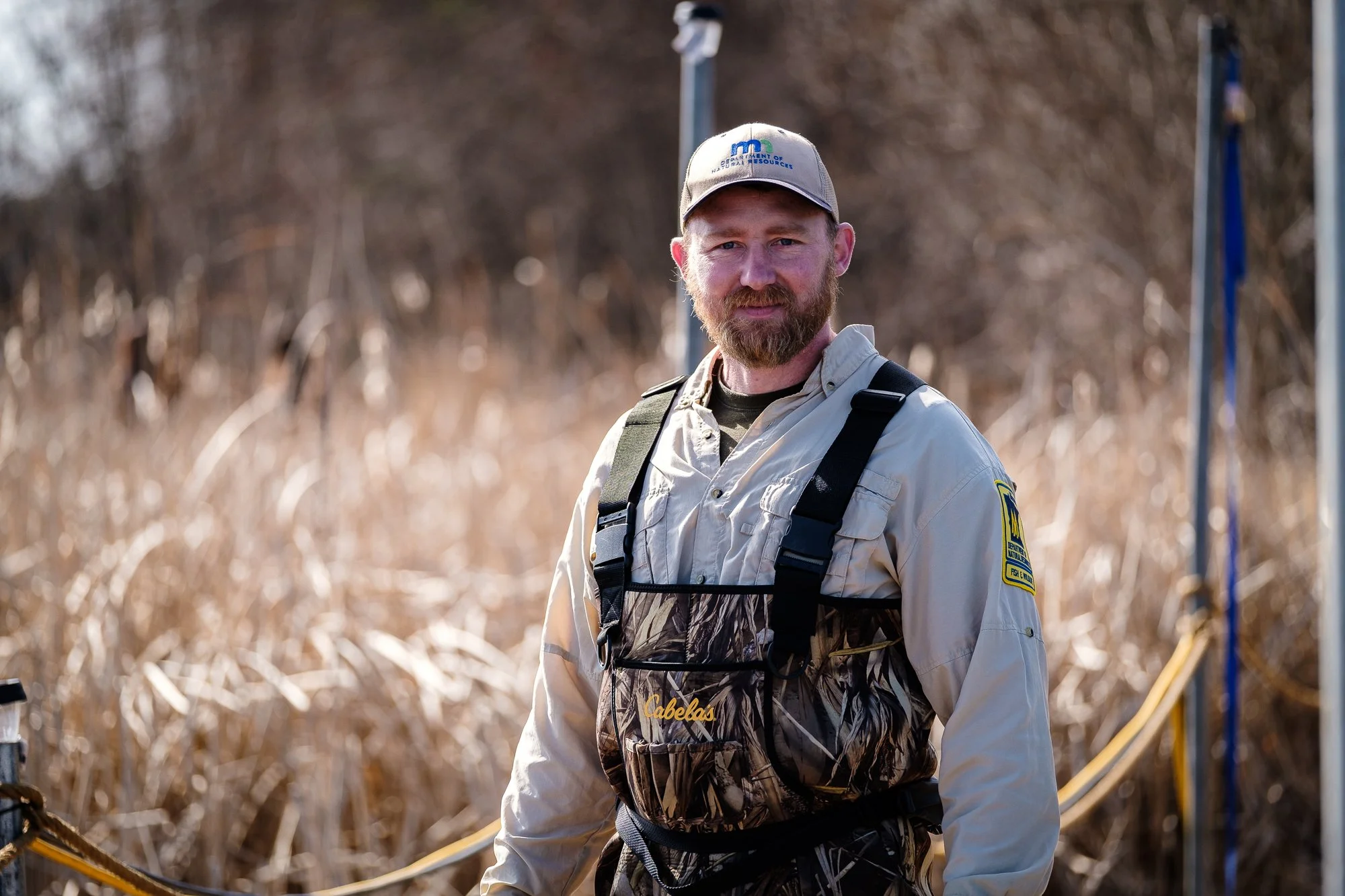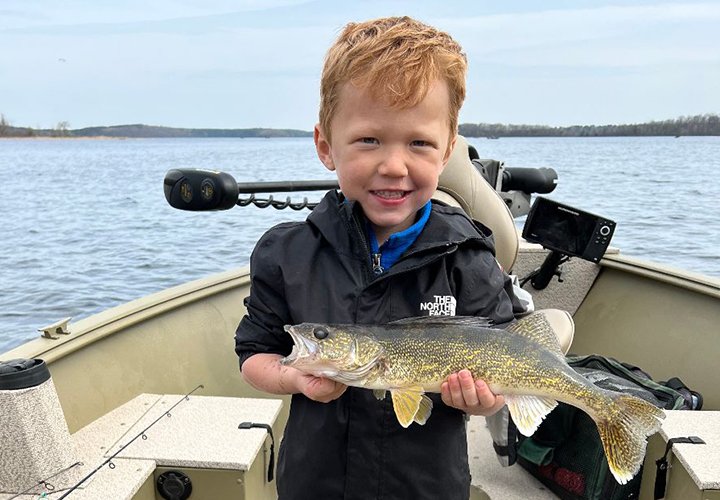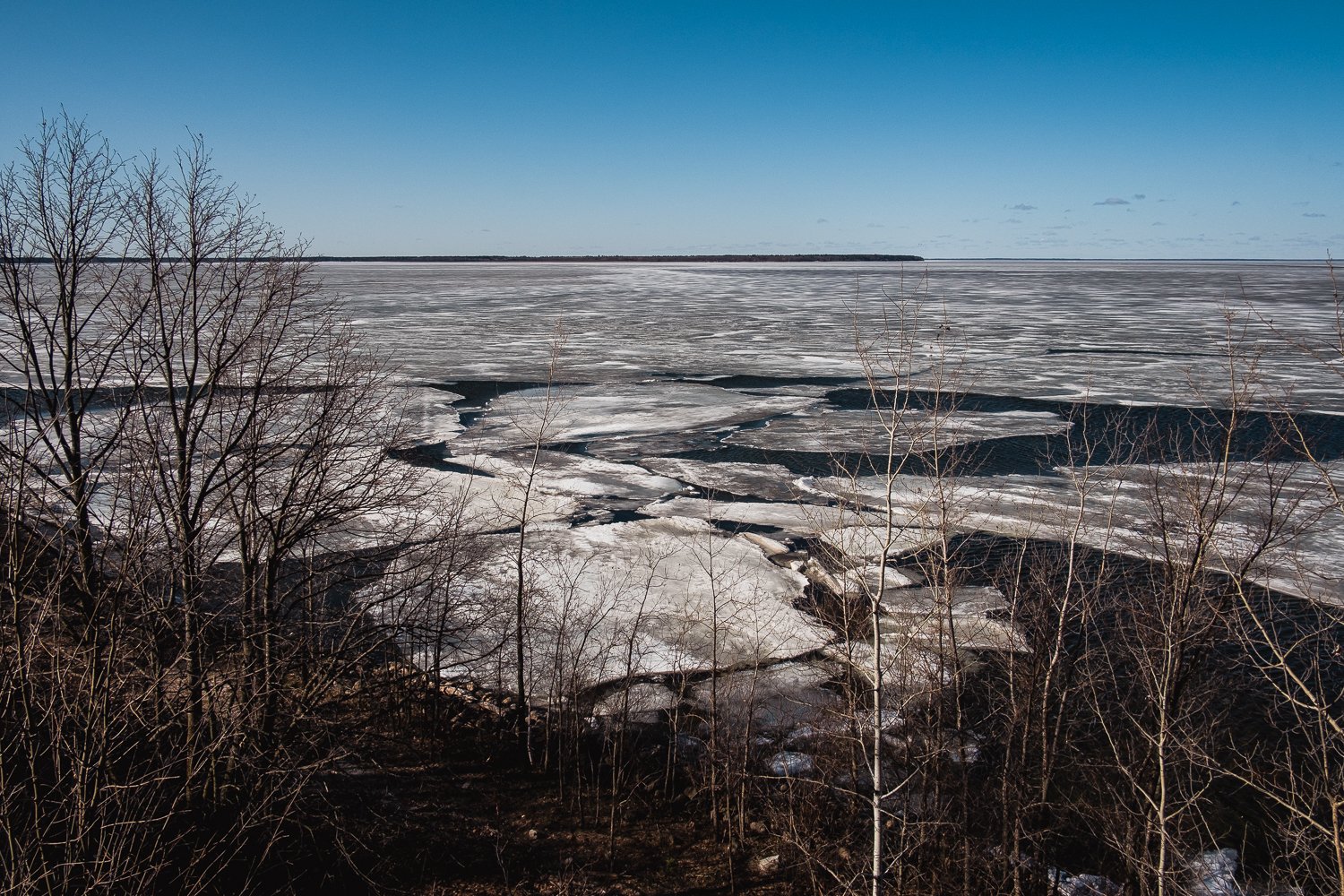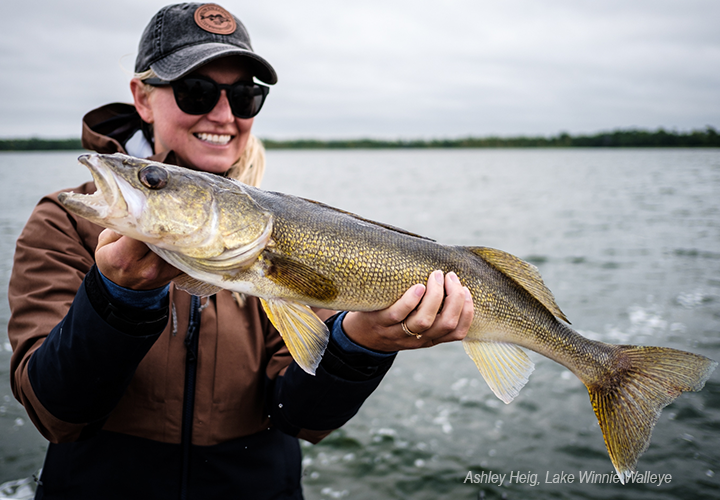With almost 2 weeks of fishing in the history books, our guests and friends have shared lots of stories from the lakes, and some very helpful fishing tips for both Lake Winnie and Cutfoot Sioux. So, going into the Memorial Day holiday weekend, our guests will be armed with the knowledge they’ll need to have a productive fishing trip.
Lake Winnie Walleye Action
Surface water temperatures have warmed up and we’re seeing daytime highs ranging from 56 to 58 degrees on the north side. Folks travelling toward the south end of the lake report cooler temperatures, 52 to 54 degrees is the norm. Extreme back bays, and areas where darker water drains into the lake are warmer, 61 to 63 degrees can be found. The variation from one area to others results in differing opinions about both fish location and presentation.
Regions of the lake with the coolest water temperatures also feature the clearest water conditions. Walleyes in these regions show a strong preference for feeding during low light periods. Anglers do report catching some fish during the daytime. But in the words of one guest whose here right now, “The evening bite is on fire, when the sun starts touching the treetops, the fish start feeding. We’re fishing in water depths of 16 to 20 feet using ¼ ounce jig heads and minnows.”
Mike Cooley with Lake Winnie Walleye
Warmer water, with darker color translates into a whole new story for folks fishing those regions. One of the better area guides says this, “On Wednesday, we fished in the extreme back regions and found 61.5-degree water. “There were some scattered, but still green cabbage plants, along with some stubby, newly emerging vegetation too. There were walleye, perch and smaller northern pike using feeding there.”
“We caught a mixed bag of fish by moving slowly along the shallow break, in water depths from 4 to 7 feet of water. The best presentation was pitching a 1/8-ounce jig tipped with minnows. We cast the jigs away from the boat and retrieved them slowly using a hop-pop-hop-pop motion. Shiners worked, but attracted more pike than walleyes and medium size fatheads attracted more walleye and perch.”
Newly Emerging Vegetation In Warmer Water
The contrasting reports, both from trusted sources, teach a lesson. “Be creative and don’t fall into the trap of believing that there’s only one good fishing area, or one presentation that works. The array of productive fishing habits widens every day, fish are showing up in shallow water, deep water and even on the flats.
Jig and minnow presentations are common thread that runs through almost all of the best fishing reports. Shiners are now widely available and despite the high cost, are being used by a lot of folks. On the big lake, especially in areas with the clearest water, shiners appear to offer an advantage. In darker water, that advantage is diluted, fatheads, rainbows and “river mix” minnows have all been equally productive. You’re better off bringing a small variety of each, rather than stocking up heavily on any one minnow type.
Lindy Rig Using “Lip Hooked” Minnows
An alternative to fishing with jigs and minnows is the Lindy Rig. If you’re fishing over a school of fish that appear un-interested in your jigs, drop down a Lindy Rig, and fish with larger minnows. A 6-to-7-foot leader with a minnow size hook #4 or #2 if needed for larger minnows, and tip them with larger bait. Unless they are very large, and very lively, avoid using fatheads for this presentation, walleyes respond more favorably to the liveliest shiners or rainbows. Hook the minnows lightly through the upper lip to help preserve their liveliness.
Crappies Begin Showing Up In Shallow Water
Crappies, another popular target during spring, have just begun getting active. Earlier this week, warm, calm weather encouraged them to move shallow in preparation for spawning. The cold front that arrived here on Wednesday dispersed them, but as the weather settles, they should begin moving toward shallow spawning areas again.
Perch fishing hasn’t caught yet on as a feature part of our guest’s fishing plans, but there are some nice ones being caught as they target walleyes. Perch have shown up in both deep and shallow water locations, but if you’re interested in targeting perch specifically, you’d be better off taking your search into the shallow water. Perch will use shallow habitats like bulrush, cabbage and other “woody structures” for spawning. Most of them have finished spawning, still, you’re liable to find them hanging around in areas like these.
So far, northern pike haven’t been targeted much either but do show up mixed with walleyes. Pike, especially smaller “eater size fish” will strike your jig and minnow presentations. To target larger fish, Lindy Rigging with larger minnows like suckers, creek chub or lake shiner. Slip floats used to suspend minnows is popular too, position your boat near rocky points, or cabbage patches.
Have you checked the weather forecast? If it comes true, we’re in for a fabulous Memorial Weekend. Sunshine, warm air temperatures and breeze should combine to provide good fishing in a variety of areas, for a variety of fish species. As always, you’re welcome to drop in and launch your boat, or stop by for a chat. If not, then we’ll see you on the water, enjoy your weekend!

























